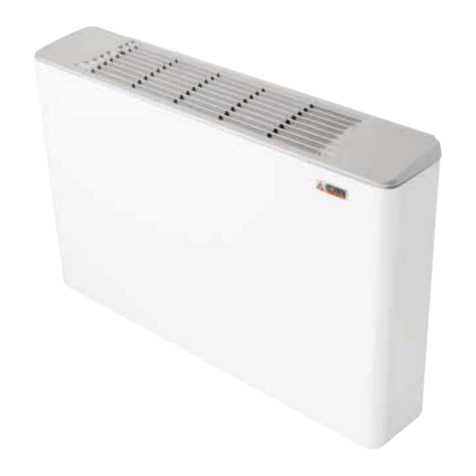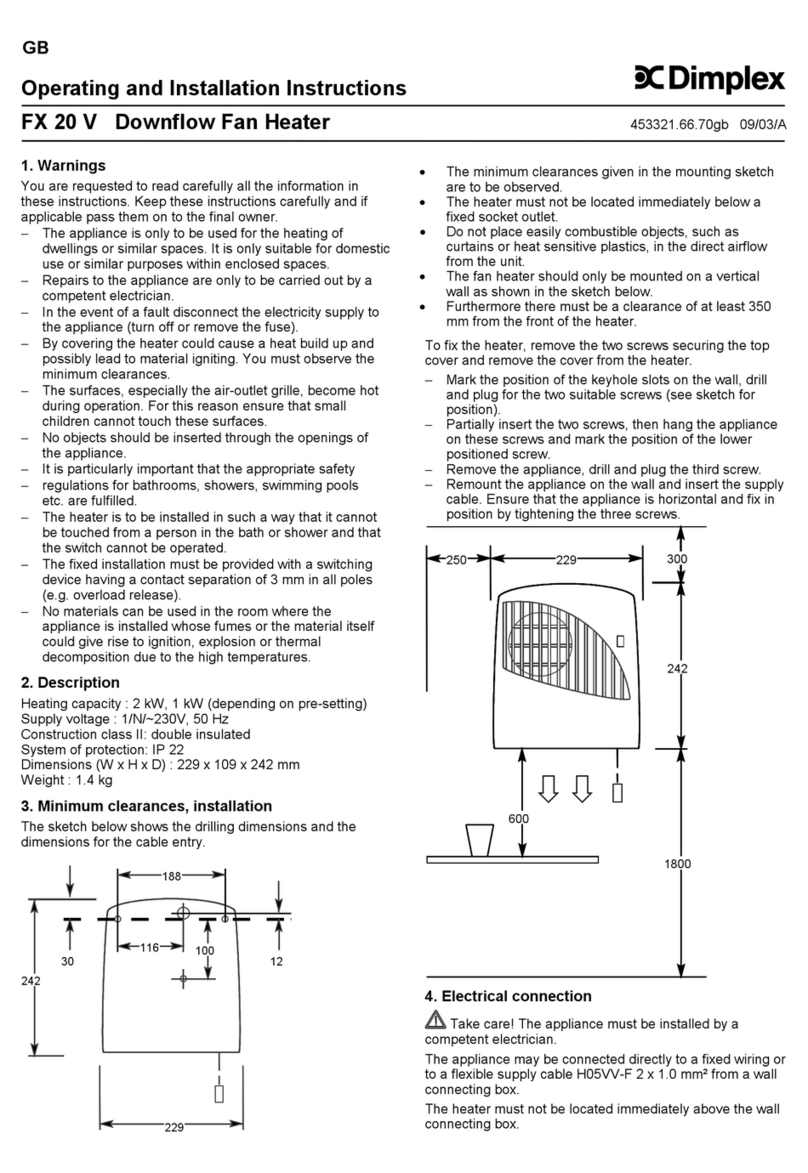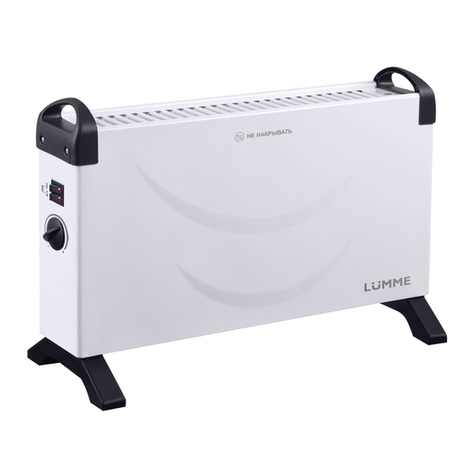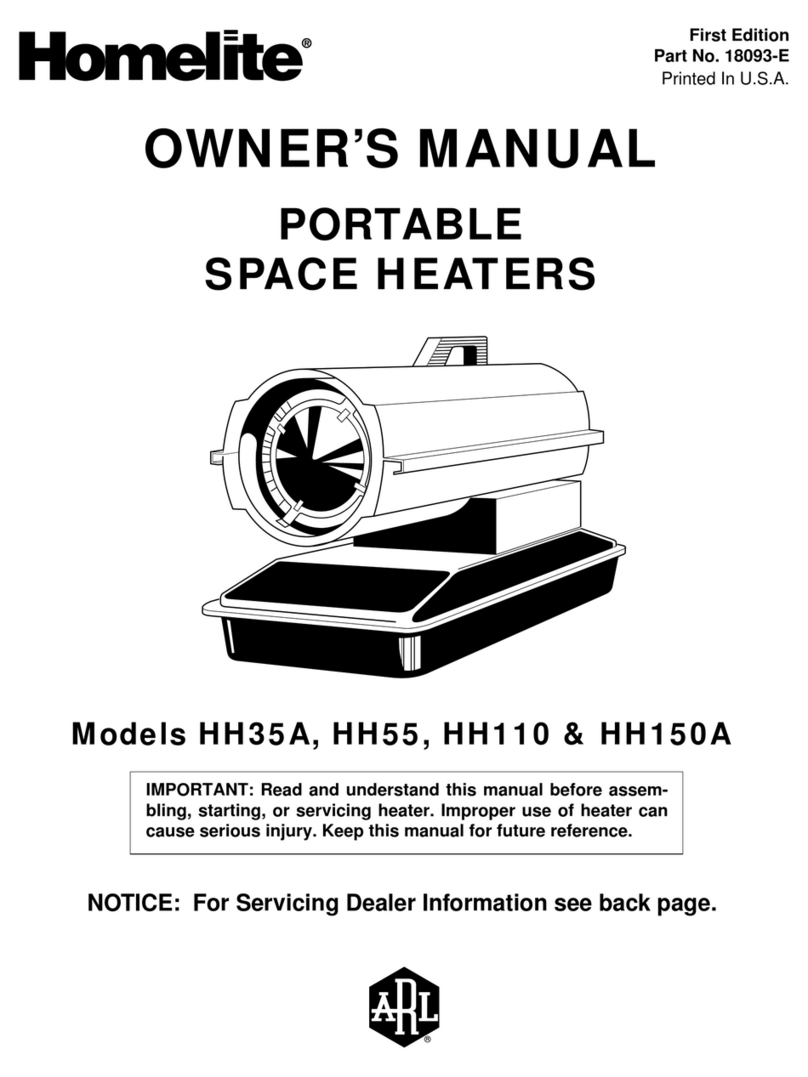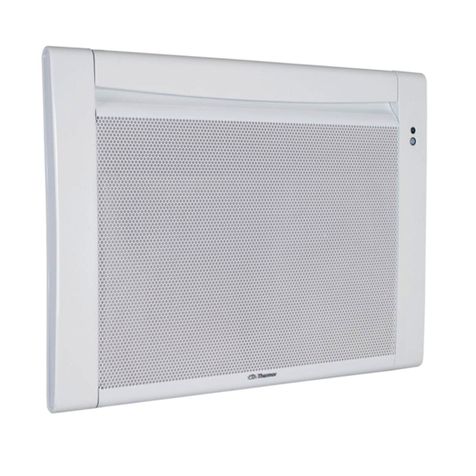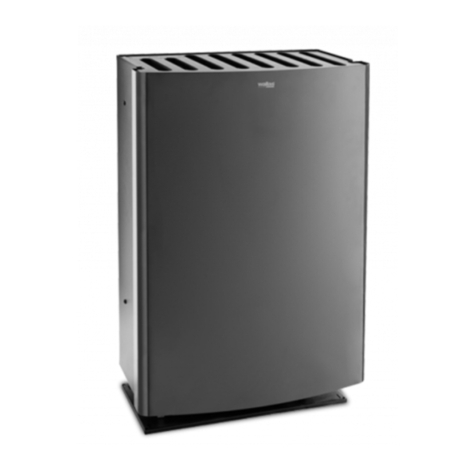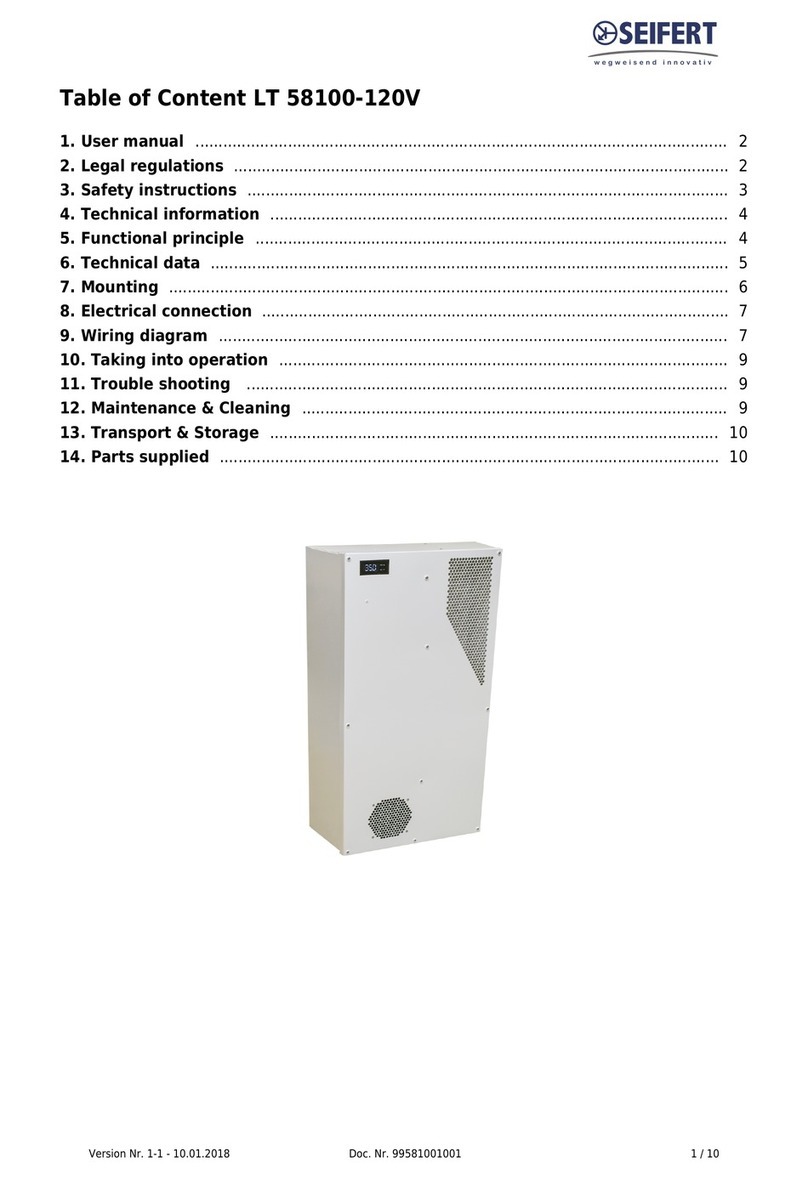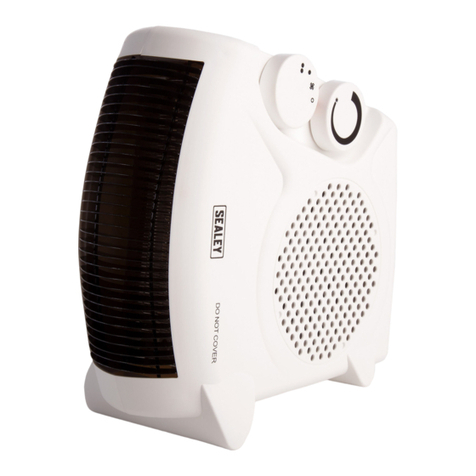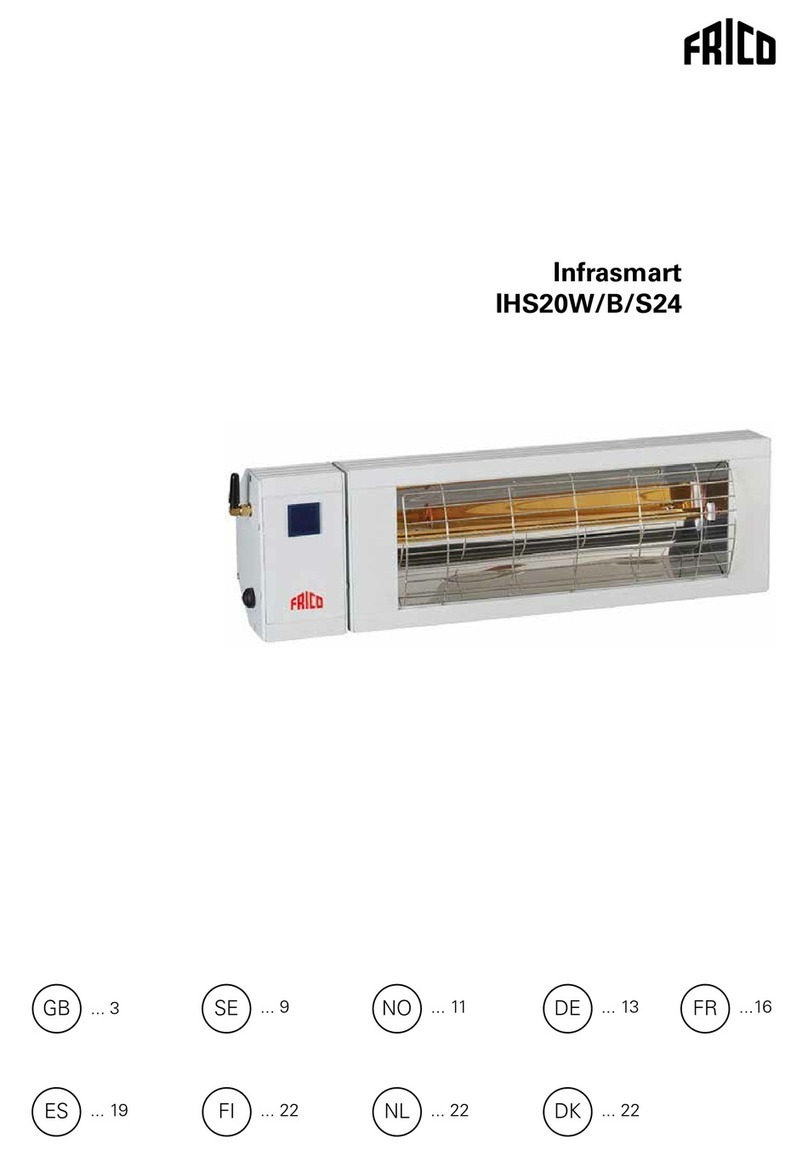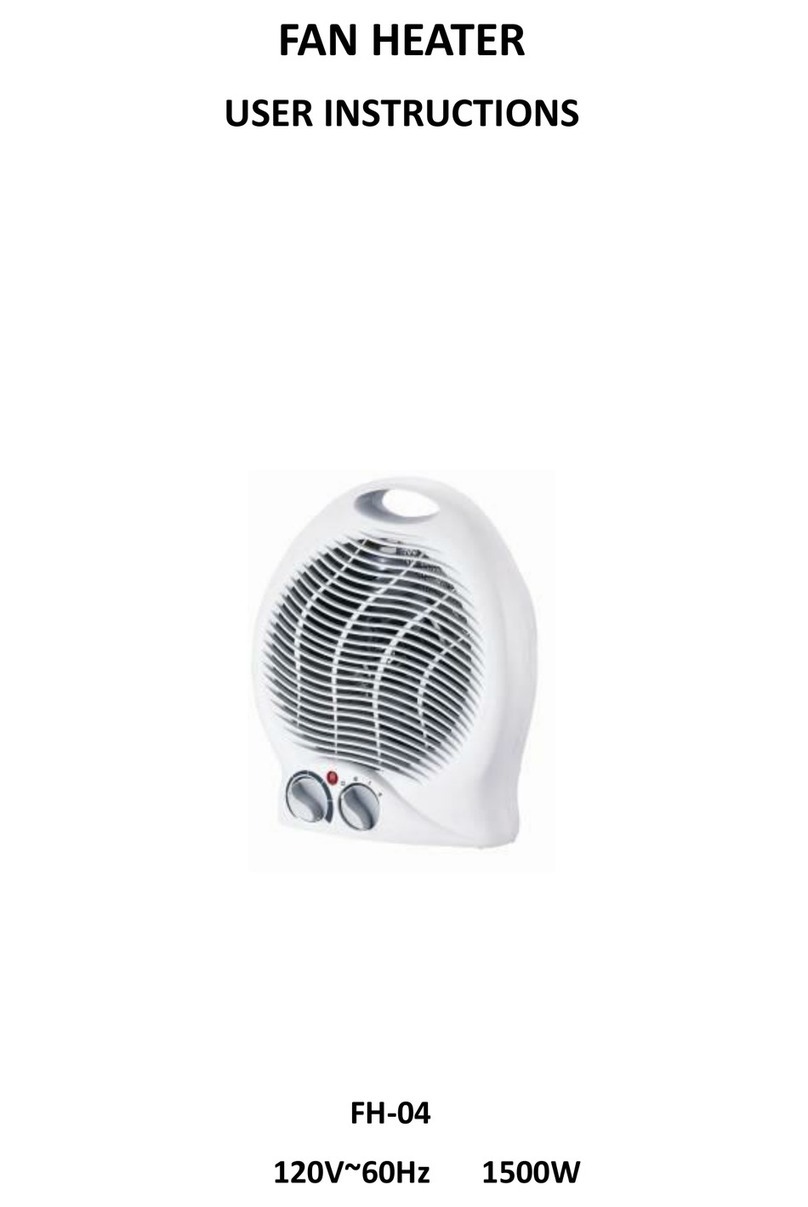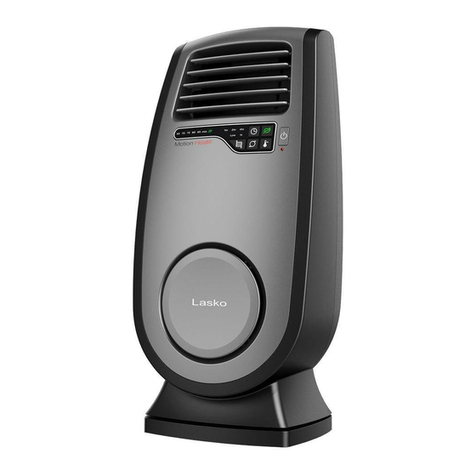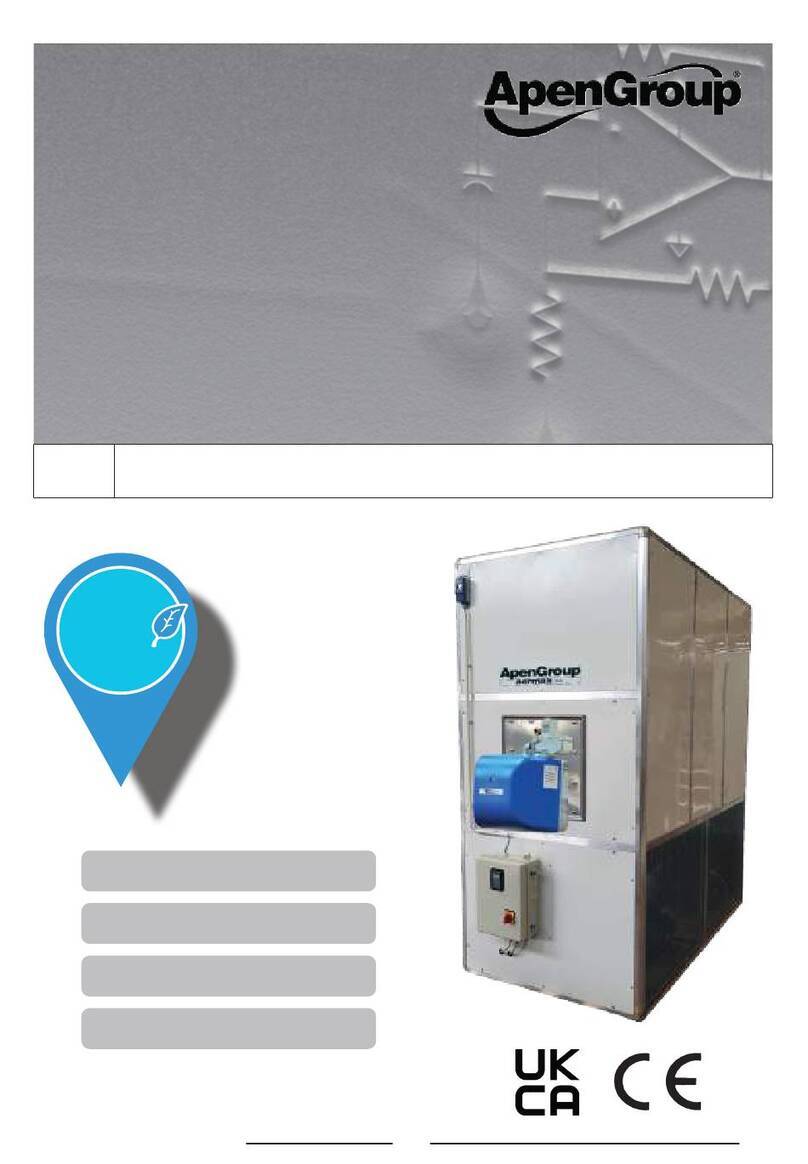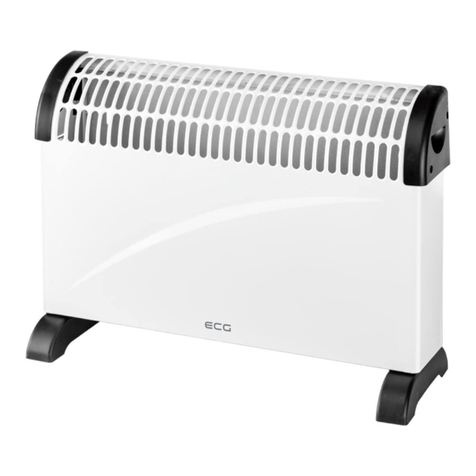NJ NJ-H2 Installation instructions

User's Instruction
Domestic flueless space heater
Model: NJ-H2
THE GUARD ON THIS APPLIANCE IS TO PREVENT RISK OF FIRE OR INJURY
FROM BURNS AND NO PART OF IT SHOULD BE PERMANENTLY REMOVED.
Before using please read this instruction carefully
2531 8504

SAFETY PRECAUTIONS:
1. Always use the heater in accordance with
user's instructions supplied with each heater.
Keep these instructions in a safe place.
3. Avoid placing the heater near furniture.
Ensure the heater is not placed in close proximity
to walls, furniture, net curtains, bed linen, or any
flammable materials, as this could pose a fire
hazard. Always maintain the following minimum
distances: 50 cm from the sides and 100 cm from
the front. Additionally, the heater should be
directed towards the center of the room at all
times, and it must be positioned on a flat, stable
surface.
2. Avoid placing clothing or any materials on the
heater, as this could pose a fire risk or affect the
appliance's efficiency.
4. Do not relocate the heater while it is in
operation.
If a leak is suspected, do not disconnect the
regulator. Instead, follow these steps: Turn off
the gas supply at the regulator. Move the
appliance outdoors to a flame-free environment.
Turn on the gas supply and carefully inspect all
connections. Gently apply a soapy water solution
or a leak detection spray to the connections. If a
gas leak is present, it will form bubbles.
If a leak is identified, promptly turn off the gas.
Important Note: Do not use the heater again until
it has been inspected by a qualified professional
in accordance with the Gas Safety Installations
and Use Regulations of 1998.

Important Safety Instructions
•Read the Manual First: Before using the appliance for the first time, make sure to read the instruction
manual carefully. Keep the manual for future reference on how to use.
•Safe Usage Locations: Use only in a well-ventilated areas. Do not use in leisure vehicles such as
caravans and auto caravans.
•Proper Placement: Place the appliance on a flat leveled surface. This appliance must be used away
from any flammable materials.
•Installation: This appliance requires installation by a competent person.
•Gas Hose Handling: If using a flexible gas hose (up to 1.5 m long), install it without stretching,
twisting, or bending. After installation, check connections for leaks using soapy solution - don't use
matches, lighters, or candles. If there's a leak, close the shutoff valve and contact a service center.
•Regular Inspections: Check the gas hose regularly, and if you notice any damage or leaks, replace the
hose immediately. Never use a faulty or leaky appliance, gas cylinder, or gas regulator.
•After Use: After each use, turn off the gas supply to the appliance by closing the gas regulator valve
on the cylinder.
•Safety Precautions: Don't leave kids or disabled individuals alone near the heated appliance. Keep
flammable materials like paper, fabrics, and liquids away from the appliance.
•Check for Leaks: Periodically use a soapy water solution to check for leaks in the appliance and its
connections.
•Gas Connection Check: Ensure all gas connections are securely and correctly fitted to prevent any
potential leaks. Use soapy water for leak detection instead of a match.
•Check Before Opening Gas Valve: Ensure the burner control knobs are in the "OFF" position before
opening the gas connection tap or cylinder valve.
•Newly Filled Containers: If you're using a newly filled container, ignition may be affected due to the
presence of inert gas. In this case, switch to a partially used container or just try to reignite the pilot
light of the heater a couple of times until gas builds up in the pipes.
•Initial Lighting and Ventilation: When lighting your heater for the first time or after a long period of
non-use, do so in an open-air area like a garden or balcony. Bring the heater indoors after it has been
operational for 15 minutes.
•No Blowing Out the Flame: Never try to blow out the burner flame; it's not safe.
•Don't Change Gas Type: You would need to use only gas type that is specified on the ratings label.
•Safety Around Appliance: Keep kids and people unfamiliar with the appliance away from it unless
they know how to use it safely.
•Keep Device Well-Maintained: Take care of the appliance to prevent damage and rust. Follow the
manufacturer's instructions for using gas appliances.
•Cylinder Safety: Put cylinders upright, secure, and away from direct sunlight. Using it in a horizontal
position can damage your heater and lead to serious consequences. Avoid checking for gas leaks
with an open flame.
•Repairs and Maintenance: Don't try to fix gas-related issues yourself. If there's a problem, disconnect
the appliance from the cylinder and reach out to the after-sales service team.

•Regular Inspection: It's a good idea to have the device inspected and maintained by authorized
technicians every two years.
•Who Should Use: This appliance isn't for children, mentally or physically challenged individuals, or
those who aren't familiar with it. They can use it If they're supervised by an adult and/or trained on
how to use it.
•Possible Changes: The manufacturer might make changes without notice, but they won't change how
the device works.
•Manufacturer's Limits: The manufacturer isn't responsible for misuse of the appliance or any
damages resulting from using it in ways it wasn't designed for.
•No Use If Damaged: Don't use the appliance if there is damage that might affect the operations of
the appliance.
•No Modifications: It's not safe to change anything on the appliance, unless the change has been
instructed and approved from the after sales team.
•Use Gloves for Hot Parts: When dealing with really hot parts, wear protective gloves.
•Safe Usage Guidelines: Do not leave the heater operating while sleeping.
Hose and Regulator Requirements: This appliance necessitates a specific hose and regulator. Consult your
gas supplier to ensure you have the correct equipment.
Please seek advice from your gas and regulator supplier to use the appropriate hose. Remember, the
guard on the appliance is in place to prevent the risk of fire or burns. No part of it should be permanently
removed.
Make sure the gas hose is properly secured at both ends with metal brackets to prevent slipping. Always use
low-pressure gas regulator (complies with EN16129:2013 and the national regulation) to connect the
appliance to the cylinder.
Introducing our Domestic Flueless Space Heater: a mobile unit featuring essential safety features
including an anti-tilt switch, oxygen detection system, and flame failure device.
TECHNICAL CHARACTERISTICS
Gas heater
Model
NJ-H2
Gas
Butane (G30), Propane (G31) or their mixtures
Type of gas
G30/31
G30
G30
G31
Category
�I3+(28-30/37)
�I3B/P(30)
�I3B/P(50)
�I3B/P(37)
Rated pressure
28-30/37mbar
30mbar
50mbar
37mbar
Destination countries
BE, FR, IT, LU, LV, IE, GB,
GR, PT, ES, CY, CZ, LT, SK,
CH, SI
LU, NL, DK, FI, SE, CY, CZ,
EE, LT, LV, MT, SK, SI, BG,
IS, NO, TR, HR, RO, IT, HU
AT, DE, CH, SK PL
Nominal Heat input Maximum 4.2 kW(306g/h); Medium 2.6 kW(200g/h); Minimum 1.5 kW(110g/h)
Ignition system
Piezoelectric igniter
Dimensions
42 x 36 x 73
Gas cylinder
from 8kg to 15kg

VENTILATION NOTICE
Please be aware that your heater consumes oxygen during operation. To ensure safe use, it's crucial to
have proper ventilation in the room where the heater is used. This facilitates the removal of combustion
by-products and allows fresh air to enter.
Appropriate ventilation significantly lowers the risk of condensation. Refer to the table below for the
recommended room sizes for each heat setting and the corresponding required ventilation surface.
REQUIRED VOLUME OF ROOM AND VENTILATION SURFACE:
VOLUME OF LIVING ROOM
VENTILATION SURFACE
Low Level
High Level
84 cubic meters
105cm
2
I
105 cm
2
CONNECTING THE CONTAINER
Gas Connection Guidelines:
Utilize an approved regulator that matches the gas supply pressure, along with an approved tubing. The
tubing should be no shorter than 50cm and under no circumstances longer than 1m. During the
connection process, take care to avoid any twisting of the hose.
Gas Leak Testing
1. Turn all appliance control knobs to the “OFF” position.
2. Be sure that the gas regulator is tightly connected to the gas cylinder.
3. Turn on the gas valve. If you hear a rushing sound, turn the gas off immediately. There is a major leak at
the connection. Connect properly before proceeding.
4. Brush soapy solution (mixture of half soap and half water) onto hose connections.
5. If growing bubbles appear, there is a leak. Turn the gas valve of the cylinder off immediately and check
the tightness of all the connections. If the leak cannot be stopped, do not try to repair it and reach out to
the after-sales service team.
6. Always turn the gas valve of the cylinder off after performing a leak test.
7. Warning: Turn off the gas supply in event of a gas leak.

HEATER CONSTRUCTION
1. Control Knob
2. Ignition
3. Safeguard
4. Oxygen Detection
Sensor (Within the pilot
assembly)
5. Rear Cover
OPERATING INSTRUCTIONS:
There are 3 controls that you need to pay attention to.
The first is the valve on the cylinder, which will be used to turn ON and OFF the gas supply.
The second is the gas control knob with a dial which has 3 positions marked on it.
This control knob is located on the top end of the heater.
The third is the piezoelectric ignition button next to the gas control knob (fig4).
Pressing this button will generate a spark on the pilot burner thus igniting the gas to the pilot burner.
The pilot and center burner should remain alight.
You may now adjust the heater setting to Low/Med/High as required.

CONTROL BUTTON:
Gas Control:
1.
LIGHTING INSTRUCTION
A.
The heater has three settings.
-
Pilot Light (Pos.1)
-
Minimum position (Lighting) (Pos.2)
-
Medium position (Pos.3)
-
Maximum position (Pos.4)
B.
Turn on the gas on the container
2.
LIGHTING:
Use one hand, press down the control knob and set the it to the minimum position (Pos.2) at the same
time press (do not hold) the piezo igniter key with thumb finger of the other hand while still holding down
the control knob. Continue this procedure until the first panel is ignited and hold down the control knob
for at least 10 seconds after lighting in order for the safety device pin to heat up and not cut-off the gas
supply to the heater’s panel. After 10-15 seconds release the control knob and the heater would be at its
minimum position. If pilot flame goes out, please repeat this procedure.
3.
HEAT LEVEL SETTINGS
To change from minimum to medium. Please gently press down the control button and turn it to position 3.
To change from medium to maximum. Please gently press down the control button and turn it to position 4.
4.
SWITCHING OFF
To turn off the gas heater, switch the gas supply off at the gas cylinder and wait for the pilot light to
extinguish. This is a safety measure to ensure that any remaining gas in the heater's pipes is burned off,
allowing for safe storage.
HOW TO CHANGE A CYLINDER:
1. Turn off at the regulator and allow the heater to cool fully before removing and replacing the cylinder.
Do not attempt to replace the cylinder whilst the heater is still in use.
2. Cylinders must be replaced in a flame free environment.
3. Do not smoke while changing the cylinder
4. When you need to replace your empty cylinder, turn the gas off at the regulator and take the empty
cylinder out of the heater.
5. Remove the regulator from the empty cylinder.
6. Follow the steps described under "Connecting the Cylinder", connect a new cylinder

SERVICE AND TROUBLESHOOTING
Pilot will not light
automatically.
No spark across
electrode gap.
Ensure that piezo-electric igniter is
functioning correctly.
Check that
electrical lead is not damaged.
Push the metal plate in front of the piezo
ignitor closely to the ignitor so that the spark
can make contact with the metal.
Pilot will not light
automatically but points (a)
to (e) are satisfactory and
the pilot will light with a
match.
Incorrect position of
spark in relation to
pilot gas flow.
Re-position spark plug so that spark jumps
across gas flow.
Heater will not remain alight
when pressure is released
from ignition button.
Electro-magnetic
valve closes whilst
heater is alight.
(c)
Ensure that thermocouple
probe is located in pilot flame.
(d)
Ensure good connection
between thermocouple and valve.
(e)
Check thermocouple
(f)
Check electromagnetic valve (by
serviceman)
4. After changing to
maximum position with all
three plaques alight. One or
more plaques appear below
normal intensively.
(a) Blocked jets.
(b) Partially blocked
supply tube.
(a) Remove and clean blocked jet.
(b) Remove supply tube,remove jets and
blow
through the tube.
5.
Difficulty in cross lighting
from position
1
to position
2
or 3.
(a)
Air draught
directed away
from first
plaque.
(b)
Position of the
pilot flame.
(a) Change the location of the appliance so
that it is not adversely affected by air
draught.
(b)
Position pilot so that flame impinges
across bottom corner of 2
nd
plaque as
well as
1'1
plaque .
6. Smell of combustion.
Missing piece of
ceramic fireclay.
Inspect perimeter of each plaque and locate
place where some fireclay has
been
displaced.
Turn to the local service
(REPAIR TO BE CONDUCTED BY AUTHORISED PRESONNEL ONLY)

STORAGE
1. Disconnect the cylinder and remove it from the appliance.
2. Store cylinders in a well-ventilated area away from combustible material.
3. The heater should be covered and stored in a dry, dust-free area in its original packaging.
CLEANING
1. Use a damp soapy wrung out cloth to clean the exterior and cylinder storage area of your heater.
2. Make sure that no water gets onto the burners or pilot/light area. Wipe the heater completely dry
before use.
3. Don't use abrasive cleaners as they may damage the quality of paint finish.
MAINTENANCE GUIDE
1. Check flexible tubing between regulator and heater regularly and replace if perished, worn or damaged.
2. It is recommended that the heater be serviced every two years by a competent person in accordance
with the Gas Safety (installations and use) Regulations 1998.
3. If any parts need replacing, they should be replaced only with the correct parts as supplied by the
original manufacturer.
4. If not in use after a long time the user should check if mobile heater does work normally, for example
flexible tubing and regulator are not thorn or damaged, the gas connection from cylinder to heater is
without any leakage, the heater can be ignited without light-back and big noise inside heater.
5. When the heater is not in use for a period of time, for instance, over the summer, we recommend that it
is kept covered or placed in its carton to minimize the accumulation of dust dirt that may occur.
6. Maintenance and cleaning must be carried out with the gas supply turned off and the heater cold. Do
not attempt to clean the heater while it is in use.
7. If any faults are detected in use, stop using the heater and contact your Dealer for advice.
8. Periodically clean the exterior and rear cylinder, storage area of your heater to remove dust a lint built-
up, which may affect operation of the heater. We recommend to clean or maintenance your heater every
two months.
9. Light vacuuming with a soft brush will remove any dust built-up on the surfaces of the ceramic
elements.
10. Do not scrape or knock these elements as they may become very fragile with use.

11. Watch the pilot flame while it is in operation. It should burn steadily, if it flickers or is yellow tipped,
the heater should be checked for correct operation.
12. If any parts need replacement, they must be replaced only with genuine original parts supplied by the
manufacturer. The use of incorrect or substitute the parts may be dangerous and will void any warranty.
13. Do not use wet rag or sprinkling water on the heater while cleaning. This may cause serious problem to
the heater. Under the circumstance of normal usage, contact our agents to conduct regular maintenance.
Leave the heater at a clean and dry area when it is not used.
This gas heater is in conformity with the following EC directive and Regulations
- Gas Appliance Directive 2009/142/EC
- Regulation of Appliance burning gaseous fuels (EU) 2016/426
And that the following standards have been applied:
- EN449:2002 + A1:2007
DISPOSAL OF THE APPLIANCE AND PACKAGING
Sustainable materials have been used during manufacture of this appliance.
The appliance packaging is recyclable. The following may have been used:
•cardboard
•paper
•polyethylene film (PE)
•CFC-free polystyrene (PS-rigid foam)
•polypropylene tape (PP)
Dispose of these materials in a responsible manner and in accordance with government regulations
To designate the requirement for separate collection of household electrical appliances,
the symbol of a crossed-out dustbin is applied to the product. This means that at the end
of its working life, the product must not be disposed of as urban waste. It must be taken
to a special local authority differentiated waste collection center or to a dealer providing
this service. Disposing of a household appliance such as this hob separately avoids
possible negative consequences for the environment and health and enables the
constituent materials to be recovered, resulting in significant savings in energy and
resources.

Manufacturer: Fontron Ltd
1 Ravnogor str. 1756 Sofia, Bulgaria
email: [email protected]
tel.: +359889895084
Official distributor: NJ Commerce Ltd
Unit C2 LHIE, Old Church road
CV6 7NB Coventry, United Kingdom
email: info@nj-commerce.co.uk
Tel.: +447731715499
www.nj-commerce.com
Version: 25 Sept 2023
Table of contents
